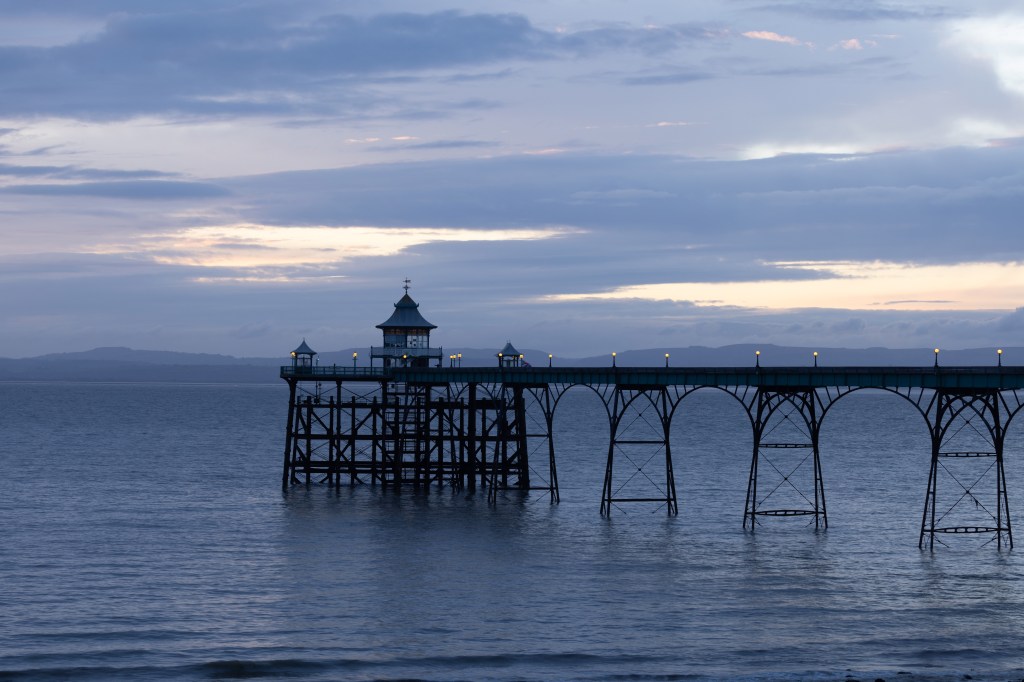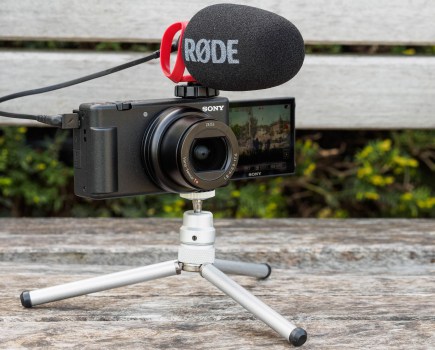Mirrorless cameras dominate the market, but DSLRs still have plenty to offer. Will Cheung compares two full-frame cameras from each camp.
The 35mm SLR has been popular for many decades and quite rightly too, with the fundamental appeal of letting you view the scene that you’re about to photograph through the actual taking lens. The concept took time to evolve and refine, from the first model, the waist-level Exakta in 1936, to the eye-level Italian Rectaflex in 1947, to the Asahiflex IIB in 1954, the world’s first SLR with an instant return mirror.
In time, the SLR gained better optics for brighter viewfinders, through-the-lens metering and reflex mirrors with a piggy-back secondary mirror to enable autofocus and selective light measurement, and more.
Of course, all these milestones came with film SLRs and when digital capture became a thing, it was mostly in the form of compact, zoom and bridge cameras with the SLR principle retained for pro-level models. This was because sensors of the day were small and larger APS-C and full-frame sensors were expensive, but that soon changed.
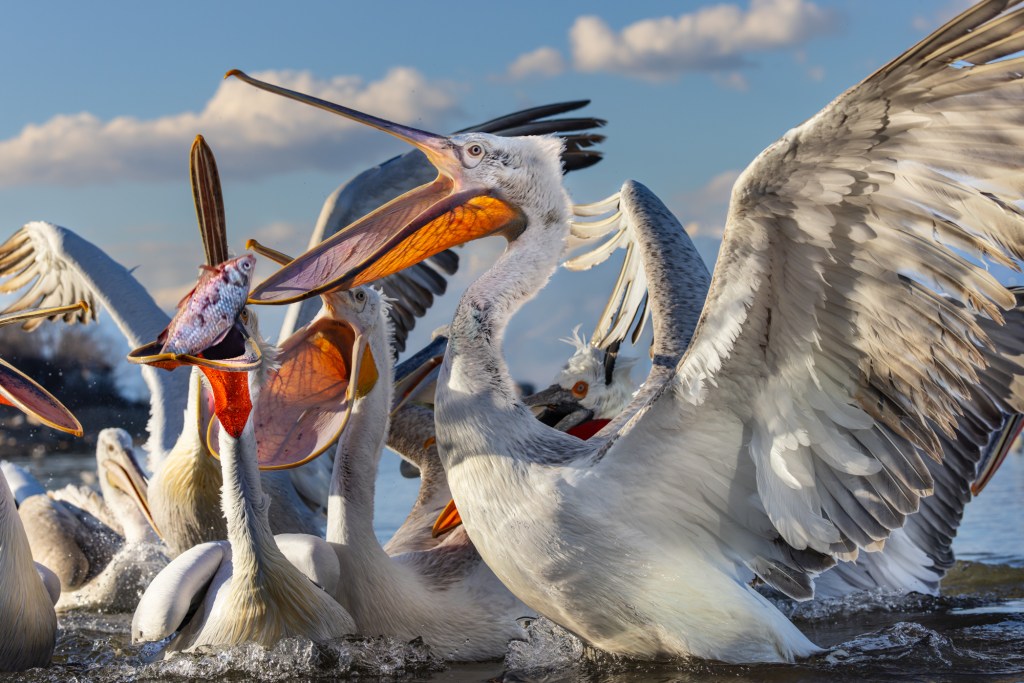
By the early years of this millennium, relatively affordable DSLRs finally arrived with models such as the Canon EOS D30, Fujifilm S2 Pro and Nikon D100, but even these weren’t cheap and it wasn’t until 2003 that the first sub-1,000 digital SLR arrived in the form of the Canon EOS 300D.
Smaller is beautiful
All was well in the world as filmless photography gradually slid into the driving seat and DSLRs continued to develop pace, with increasing resolution, improving high ISO performance and video. However, the DSLR was not going to have its own way for long; the tide started to turn in 2008 when Panasonic launched its Lumix G1, a compact Micro Four Thirds format camera aimed at photographers wanting a high performance and interchangeable-lens versatility in a smaller form.
Of course the smaller format was a key factor in the petiteness of the Lumix G1 system, but it was also the first mirrorless camera. The monitor and finder viewing image were provided by the sensor so there was no longer any need for the pentaprism and mirror box that was traditionally needed for through-the-lens viewing.
This meant a slimmer body and a shorter distance between the back of the lens and the sensor plane, and this in turn meant bulky retrofocus lenses were no longer required, giving the chance for more compact lenses.

Several camera brands including electronics giant Sony nailed their colours to the mirrorless mast early on, while Canon, Nikon and Pentax held on stubbornly to their SLR values. They obviously had a huge commitment to cameras with reflex mirrors but they relented when the market told them that hanging on to a concept that was 70 years old was not wise, and it was probably more sensible to provide what buyers wanted.
So, Canon and Nikon, while still selling DSLRs, fully committed to mirrorless in 2018 and have been playing catch-up ever since. Both have done well and are now on a level playing field with their rivals and have not only embraced the opportunities offered by mirrorless but taken key areas and advanced them even further.
The present day
So, here we are in 2024 with camera sales continuing to decline but with mirrorless models outselling DSLRs. What’s more, while new mirrorless camera and lens launches seem to happen almost monthly, the last DSLR was the niche Pentax K-3 Mark III Mono in 2022 and the last DSLRs from Canon and Nikon were from the EOS-1D Mark III in 2020 and the D6 in 2019, respectively.
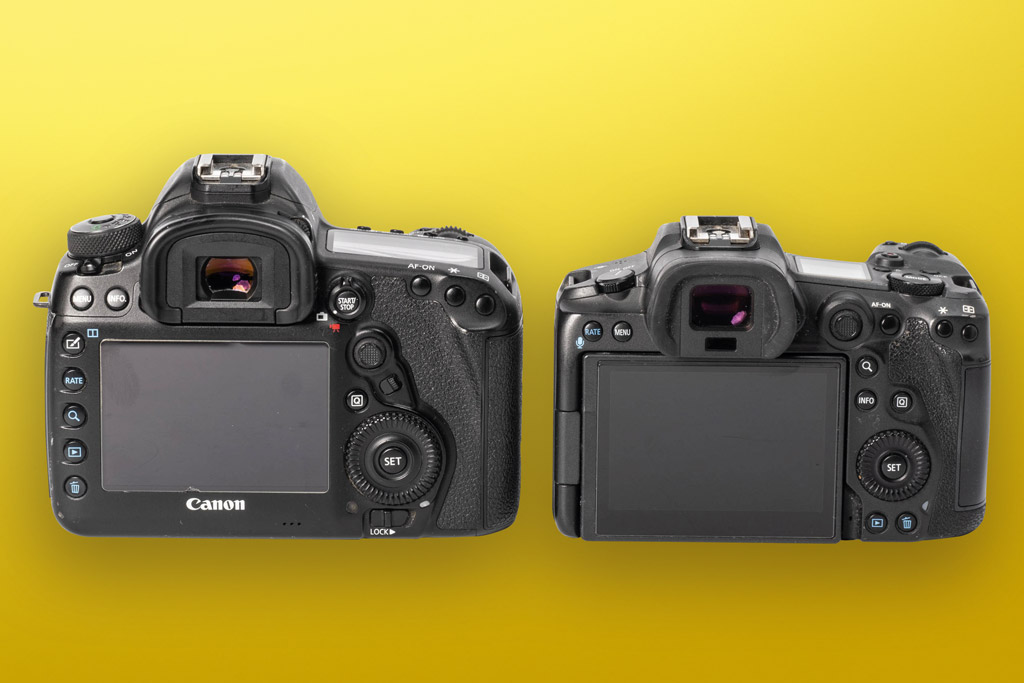
Of course, DSLRs have a head start of many years so there are plenty of fabulous, high-performing models getting regular use out there. Furthermore, there’s great value for money to be had from DSLRs, a point made even more forcibly thanks to the high price of the latest top-end mirrorless cameras.
While many photographers have taken the opportunity to downsize, adopting Micro Four Thirds and APS-C format cameras, there are probably just as many for whom full frame is the pot of gold at the end of the rainbow. So, to check out the options we took a close look at two full-frame Canon cameras, popular among enthusiasts and pro photographers, and also highlight a selection of full-frame DSLRs worth investigating.
Tale of two Canons: Canon EOS R5 vs Canon EOS 5D Mark IV
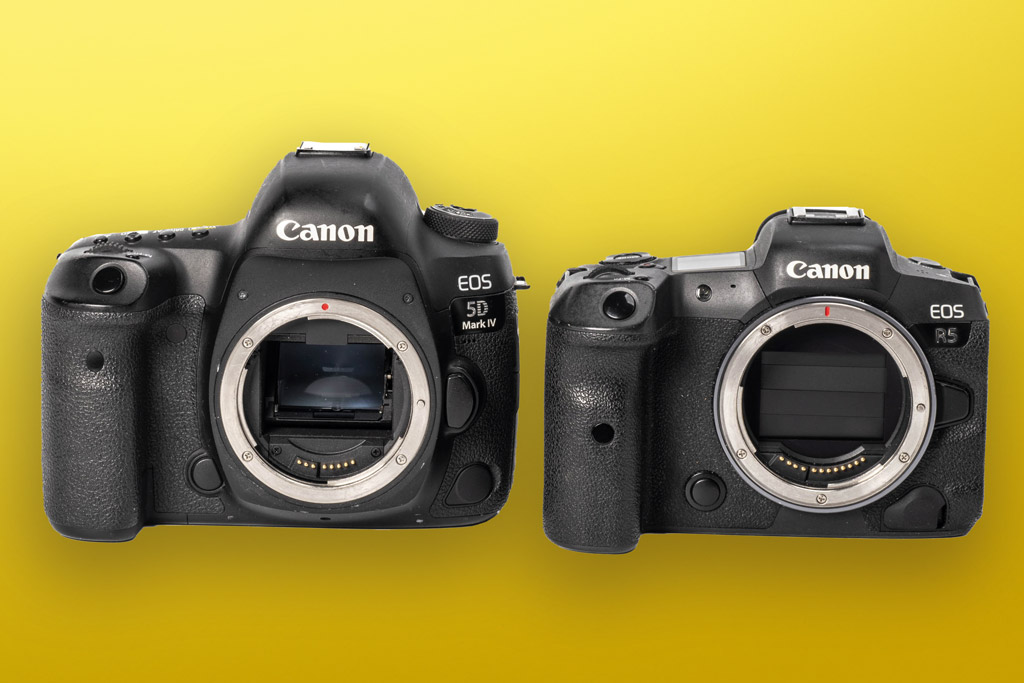
The Canon EOS 5D Mark IV is very likely the last in the brand’s hugely respected DSLR 5D-series, available new at $2299 / £2970 and used from under 1000. The Canon EOS R5 is a mirrorless model with a new price of $3,399 / £3,799 and under 3000 on the second-hand market. With rumours of an EOS R5 Mark II due imminently, the EOS R5’s price will fall in time.
The EOS 5D Mark IV has a CMOS sensor boasting a resolution of 30.4MP and a native ISO range of 100-32,000. It’s not a lightweight camera and its heft does give it a reassuringly robust feel. If you want a camera that instils confidence, the EOS 5D Mark IV fits the bill.
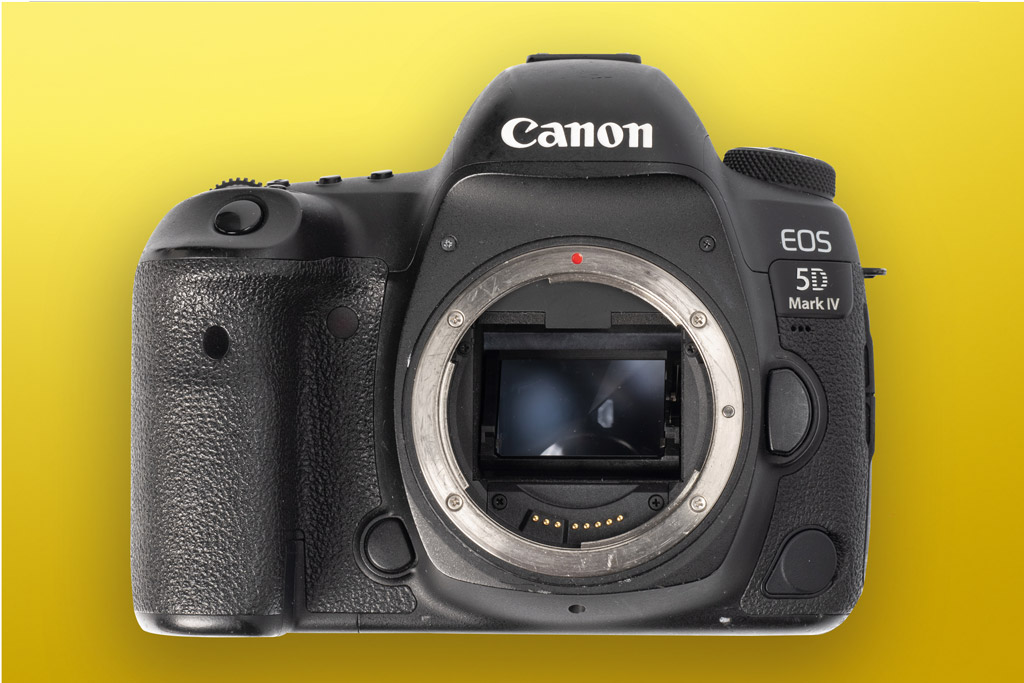
Canon EOS 5D Mark IV at a glance:
- 30.4MP resolution
- 6720×4480 pixels
- 7fps continuous shooting with AE/AF tracking
- Live view mode, 61 AF point system
- Dual Pixel CMOS AF with face detect and tracking AF
- ISO range 100-32,000, expands to ISO 50-102,400
- Video: 4K (17:9) at 23.98/24/25/29.97
- Fixed LCD monitor: 1.62m dots
- CompactFlash and SD card slots
- Water and dust resistance
- 151×116.4×75.9mm
- 890g body only (with battery)
Its control layout followed the pattern of previous EOS 5D models with notable features being the large rear input dial, full information top-plate LCD panel and the AF joystick. As with most DSLRs of the day,
users demanded reliability and flexible monitors were not thought to be tough enough, but it shows a good image and it is touch-sensitive.
Fixed monitors are fine, but less user-friendly when the camera is low or high and you can’t get your eye to the viewfinder eyepiece and need to use live view. It needs to be manually activated when it’s needed and the image is bright with features such as touch AF making it good to use. Live view AF is not as responsive or sure-footed as mirrorless AF, but it works well enough if you’re patient.
It’s in front of you
One of the joys of DSLRs is the direct connection with the scene in front of you, and the EOS 5D Mark IV’s viewfinder is impressive. Its brightness depends on the scene and the speed of lens fixed to the front but even with modest maximum value optics in daylight, the image is decently crisp and contrasty. Of course, what you don’t get with the optical finder is any indication of what your exposure and white balance settings are doing to the final result. However, with no flicker or image smearing that can affect some EVFs, the EOS 5D Mark IV’s finder has much to commend it.
The camera’s AF in normal use is fast and responsive, and moving the AF area around to cover the subject is easy enough, but its working area with up to 61 AF points is limited to a large centre section of the image; it’s not anywhere near 100% but the coverage is enough for most scenes. You get more with live view and AF points are available quite deep into the corners.
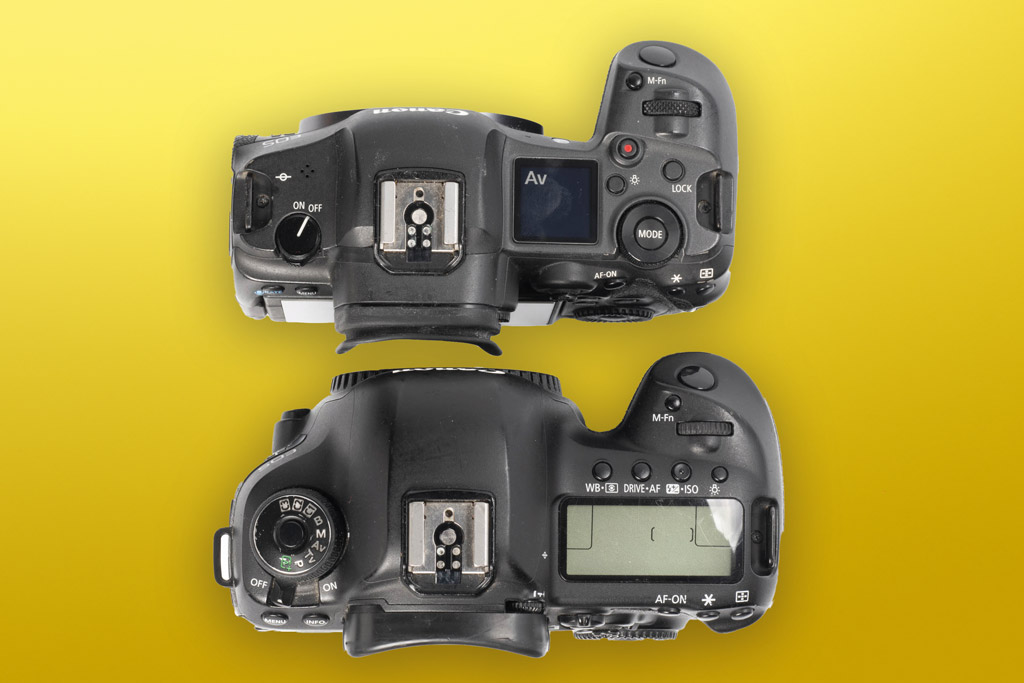
Live view AF can be a little twitchy and the lens can search for focus. The live view image itself is good and has the benefit of being self-regulating so it’s bright when ambient light levels drop.
Take a shot with an DSLR and you know it. Indeed, so does anyone without a few metres of you. Reassuring the clunk-click of the instant return mirror and the shutter opening and closing might be, it’s not ideal when it comes nature or street photography, even more so in continuous shooting. There’s the matter of vibration too, although mirror lock-up is available; and with no in-body image stabiliser, getting sharp handheld shots at slow shutter speeds is a challenge.
Mirrorless next up – Canon EOS R5
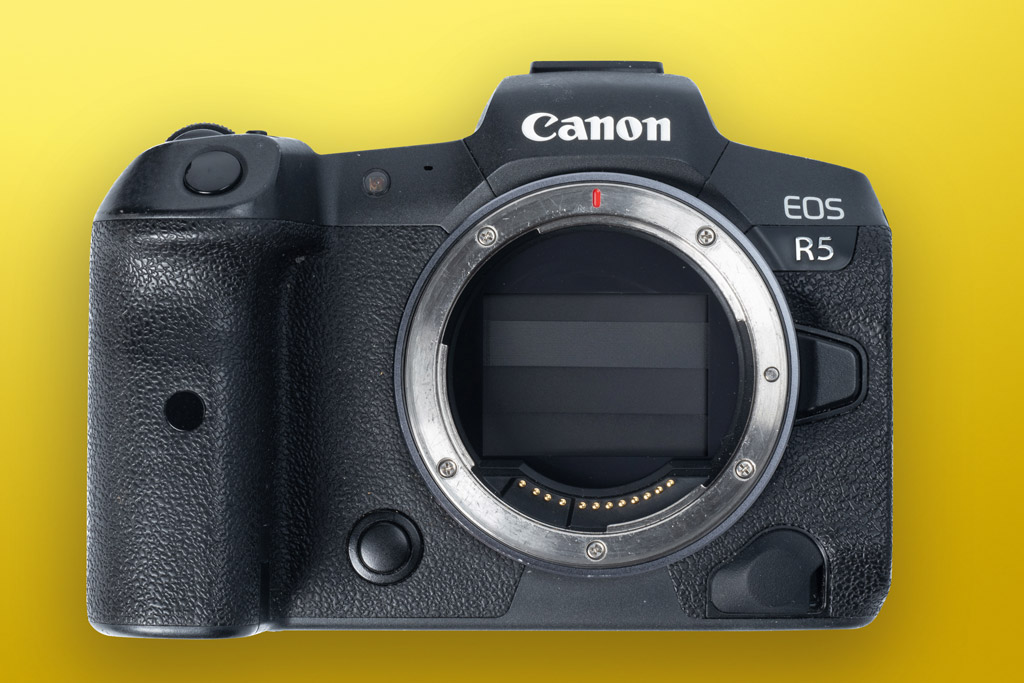
Canon EOS R5 at a glance:
- 45MP resolution
- 8192×5464 pixels
- 20fps continuous shooting
- 8EV benefit in-body image stabiliser
- Dual pixel CMOS AFII with 1,053 AF areas in Face+Tracking mode
- Subject detect: humans, animals, vehicles
- ISO range 100-51,200, expands to ISO 50-102,400
- 8K DCI (17.9) at 24/25/30, 4K DCI (17.9) at 24/25/30/50/60/100/120
- Fixed LCD monitor 2.1m dots
- CFexpress Type B and SD card slots
- Water and dust resistance
- 138.5×97.5x88mm
- 738g body only (with battery)
Put the EOS R5 next to its DSLR brother and its more petite bodyform is immediately apparent, but it is still deep enough for the baby finger to have something to rest against. The body is lighter but it’s no featherweight which goes to show that saving weight is not a prime motivator for going mirrorless, unless you go the whole hog and buy a smaller format camera.
Control layout of the EOS R5 is different from the EOS 5D Mark IV with some changes forced by the provision of a vari-angle monitor, but you can tell the two cameras are from the same stable, and that includes the menu structure.
The mirrorless experience starts the instant you turn the camera on. By default, you get the monitor viewing image with auto switchover to the EVF when you lift the camera up to the eye. You can turn the monitor off or have it facing inwards for the film camera experience and turn off auto switchover too.
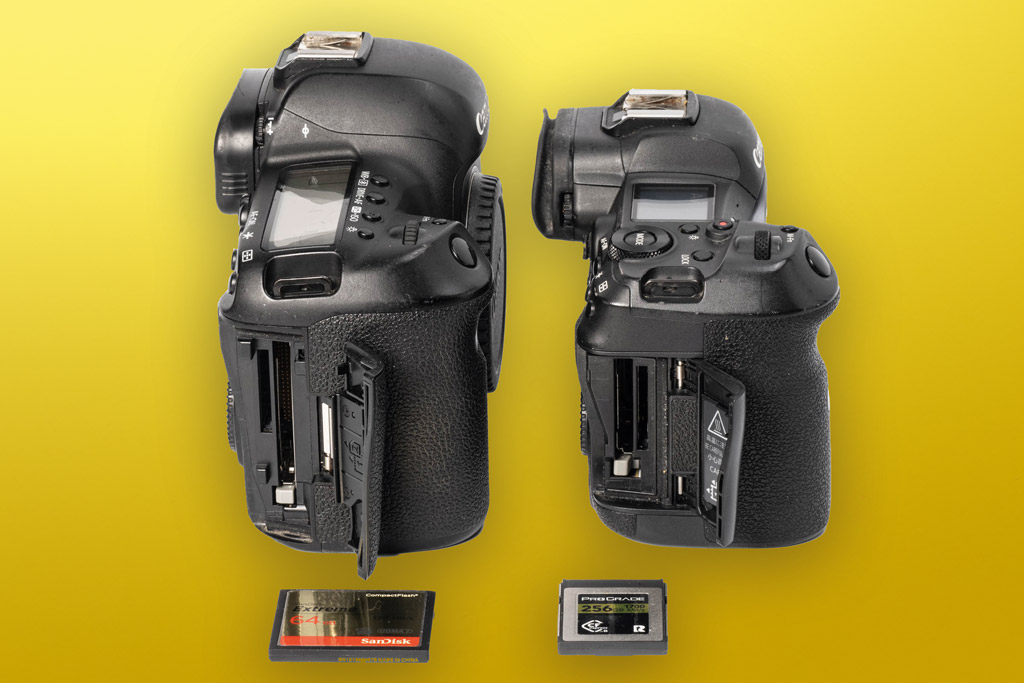
In terms of resolution the EOS R5’s EVF has 5.76m dots so there’s plenty of detail and the 120fps refresh rate means there’s no smearing during panning. The experience is not far off an optical finder, with the benefit that you can see the result of adjusting settings in real time and zoom into the scene to critically check focus.
There’s excellent versatility when it comes to AF set-up. Whether using the EVF or the monitor, focus points are available deep into each corner, and of course you can use face+tracking AF with subject/eye detect. In this respect, the EOS R5 is remarkable when it comes to latching onto a subject and sticking with it as it moves around in the frame, and this is in stills and video shooting. If you enjoy action photography or shooting birds in flight, you can’t help but be impressed with the EOS R5’s AF tracking skills which at the moment are among the best money can buy.
Speaking of action work, this is one area where mirrorless is significantly better than DSLR. The EOS R5 is not the fastest raw shooter currently available, but it can still whizz through shots at 20fps using its electronic shutter with full AE/AF tracking, in total silence and vibration-free too.
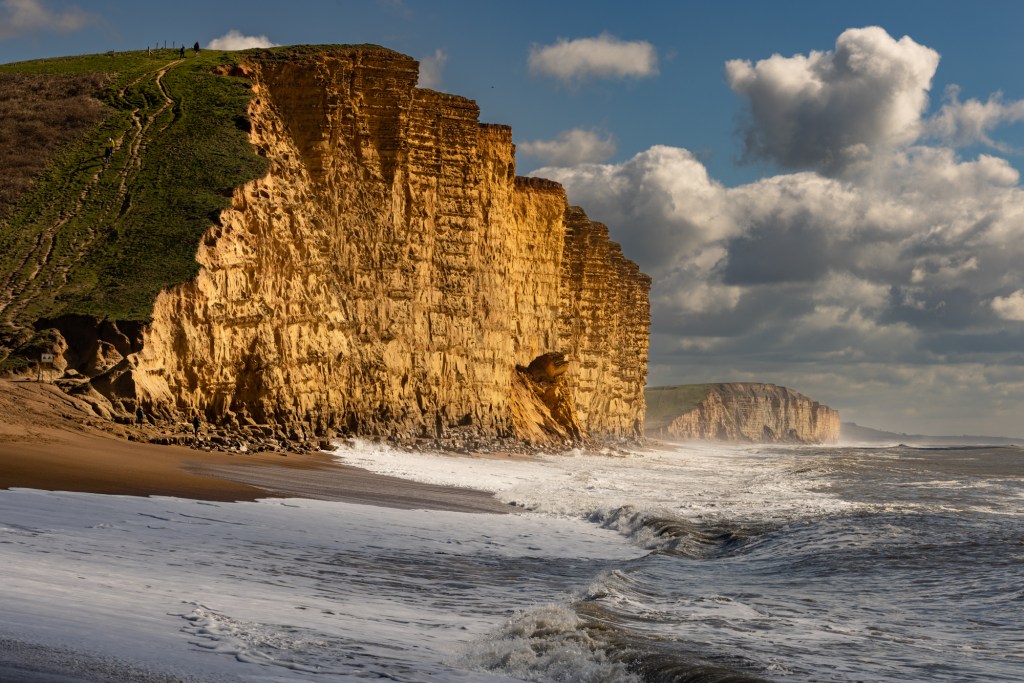
Using the electronic front shutter drops the shooting speed down to 12fps which is still much quicker than the EOS 5D Mark IV.
To sum up
Both cameras have a great deal going for them, and if you take the used route, there’s much more value going for the DSLR and that includes lenses too with so many out there. Canon is growing its RF lens range, but there are still gaps and the high-spec lenses are expensive. Also, there are no third-party AF lens options to consider, although Canon might relent on this policy at some point.
In terms of usability and performance there are pros and cons to both camera types, but on balance, mirrorless gets the nod. Not only that, but we are in the relatively early days of the mirrorless camera and they will only get better. Commit to mirrorless now and you’ll be handily placed to make the most of the new technology as it comes on-stream. The downside, though, is very likely to be the price. R&D costs money and with fewer cameras being bought, you can guess who will be footing the bill.
As it stands, though, there is much to be appreciated with these two highly capable Canons so if full frame is your aim, then check them out.
Assessing imaging performance – Canon EOS Mark IV vs Canon EOS R5
Let’s take a closer look at what the Canon EOS 5D Mark IV and EOS R5 can deliver in terms of picture quality.
A low-light scene was captured on both cameras with all in-body noise reduction turned off. The raw files were processed through Adobe Lightroom with default noise applied. Software such as DxO PureRaw and Denoise in Lightroom means raws can be cleaned up effectively, but we wanted to see what each camera was capable of.
The enlarged sections show the image at 100%. The lower megapixel count of the EOS 5D Mark IV means its images are smaller at the same magnification.




For the exposure latitude assessment the same scene was photographed at various exposures, starting with the correct metered exposure and then bracketing in 1EV steps up to +/-3EV. The incorrectly exposed raws were then corrected using Adobe Lightroom.
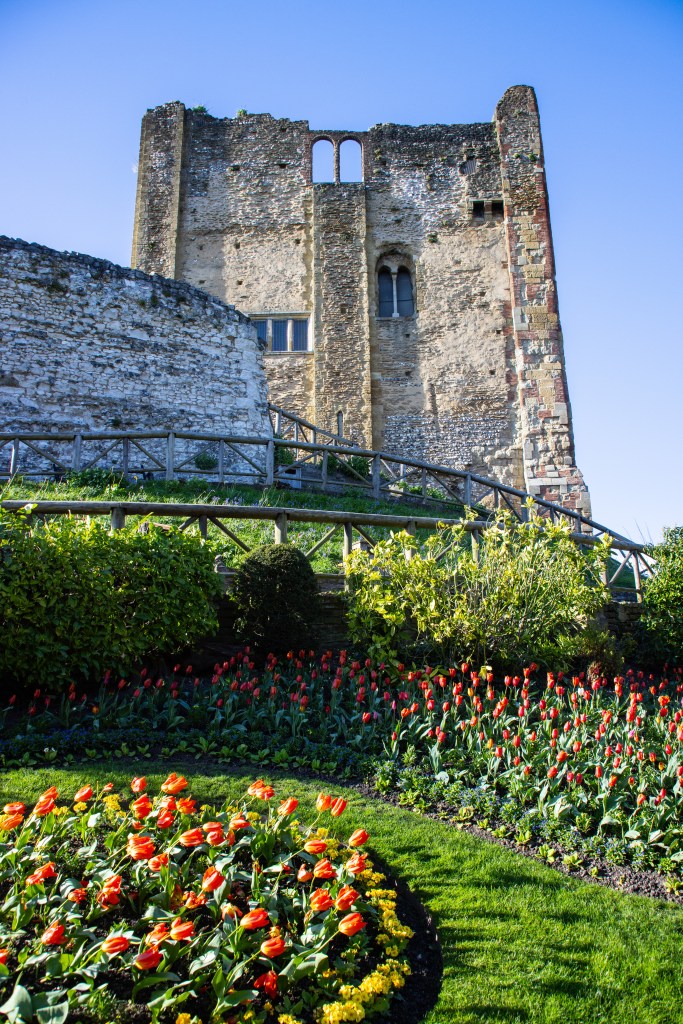
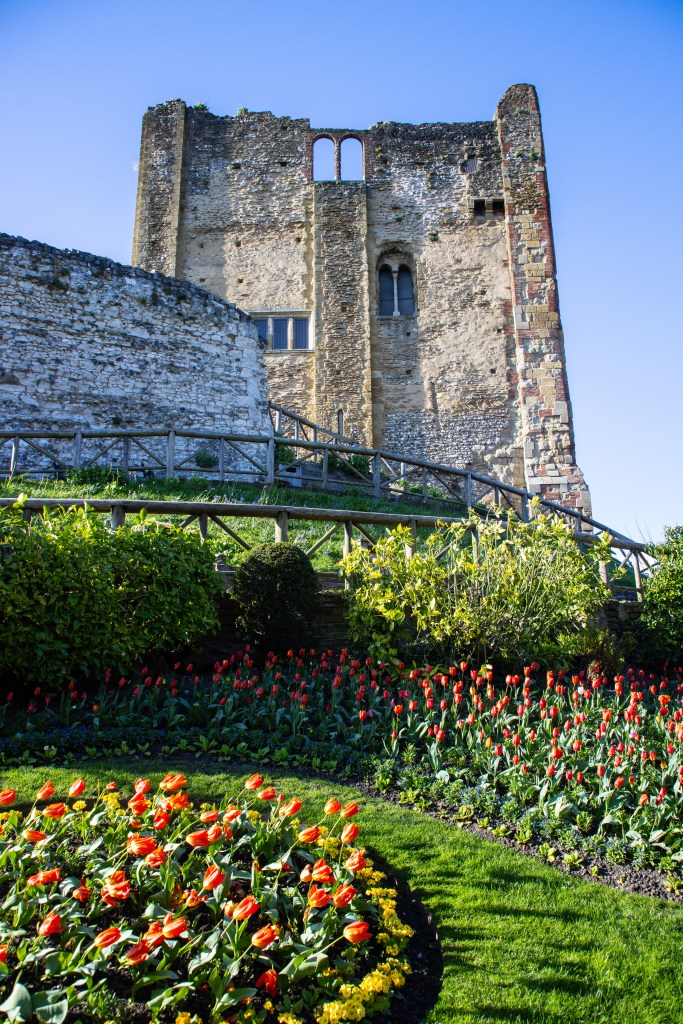

Test summary
Four years separate the two cameras, with the EOS 5D Mark IV coming out in 2016 and the EOS R5 being unveiled in 2020. That’s a decent gap and you’d expect the EOS R5 to be better, and indeed it does turn in a superior high ISO performance – but the difference isn’t huge, and don’t forget we are taking a critical look here.
At ISO 12,800 the EOS R5 shows noise but it is finer than the EOS 5D Mark IV and the impact on detail is much less. Also, bear in mind that the EOS 5D Mark IV file would need magnifying to 122% to give the same image size and that would make the noise more obtrusive.
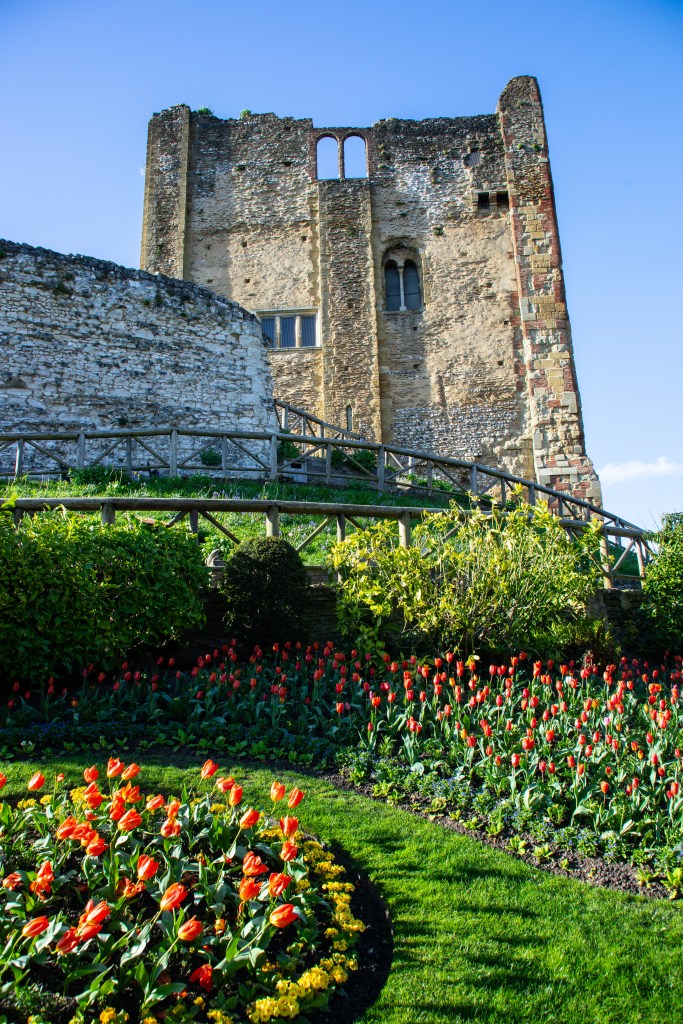
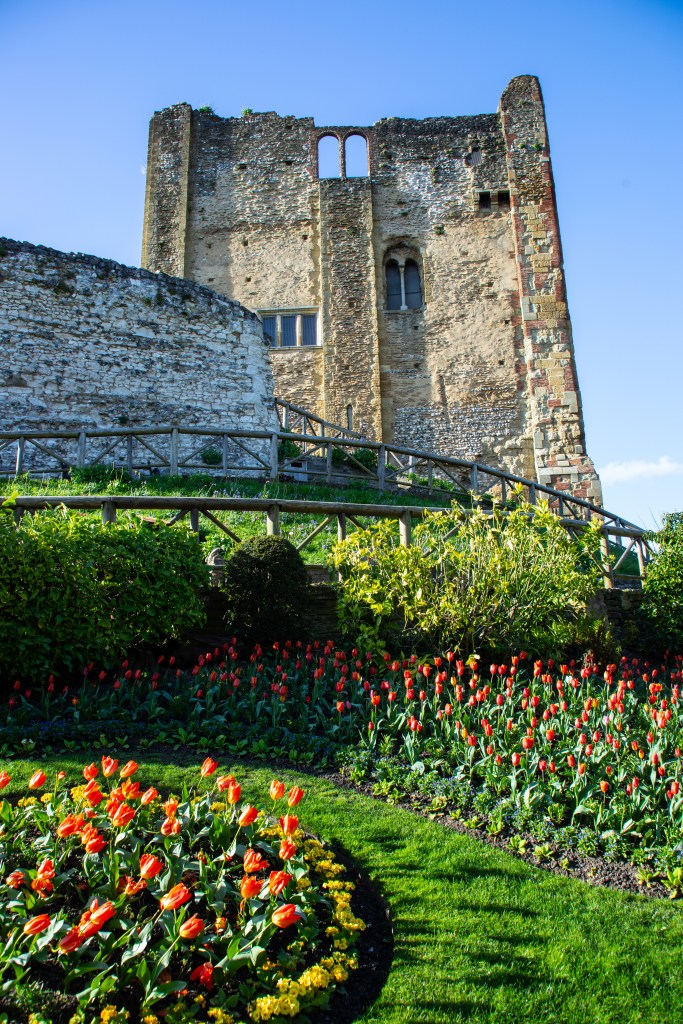
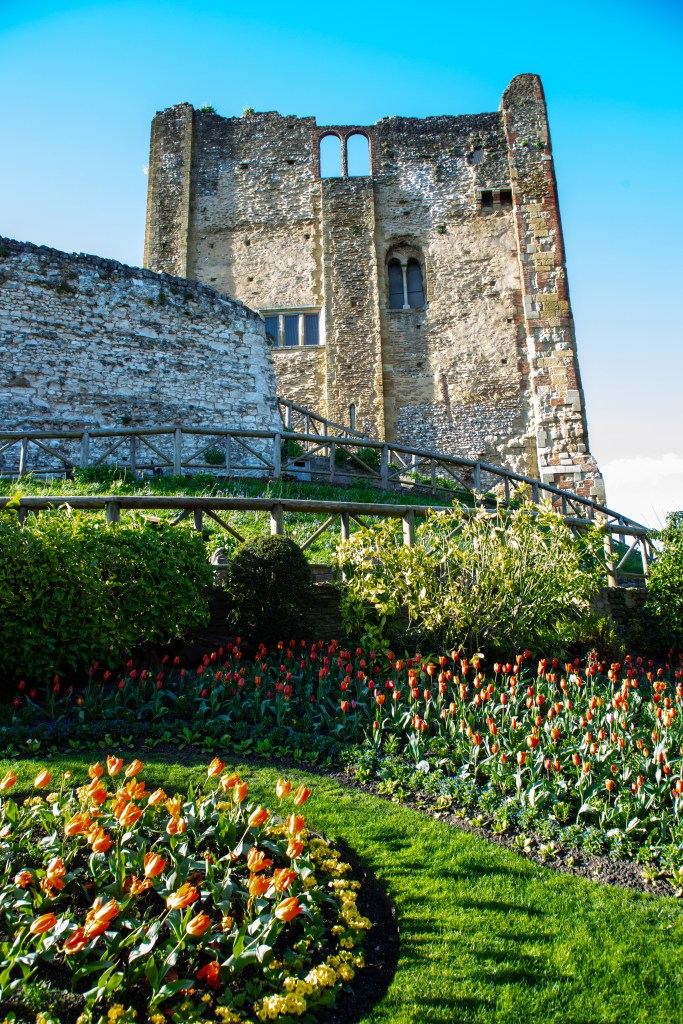
The raws from both were good at dealing with incorrect exposures. In both cases, recovering the -2EV shots meant a tiny noise increase and that was more evident with the -3EV pictures. With overexposure the +2EV was the limit in both and you can see that exposure correction brought a colour cast to the sky so that would need extra editing to get a more natural-looking result. The highlights in the +3EV shots were unacceptable and looked veiled and lacked any detail.
Top 5 used full-frame cameras to check out
Canon EOS-1D X Mark II
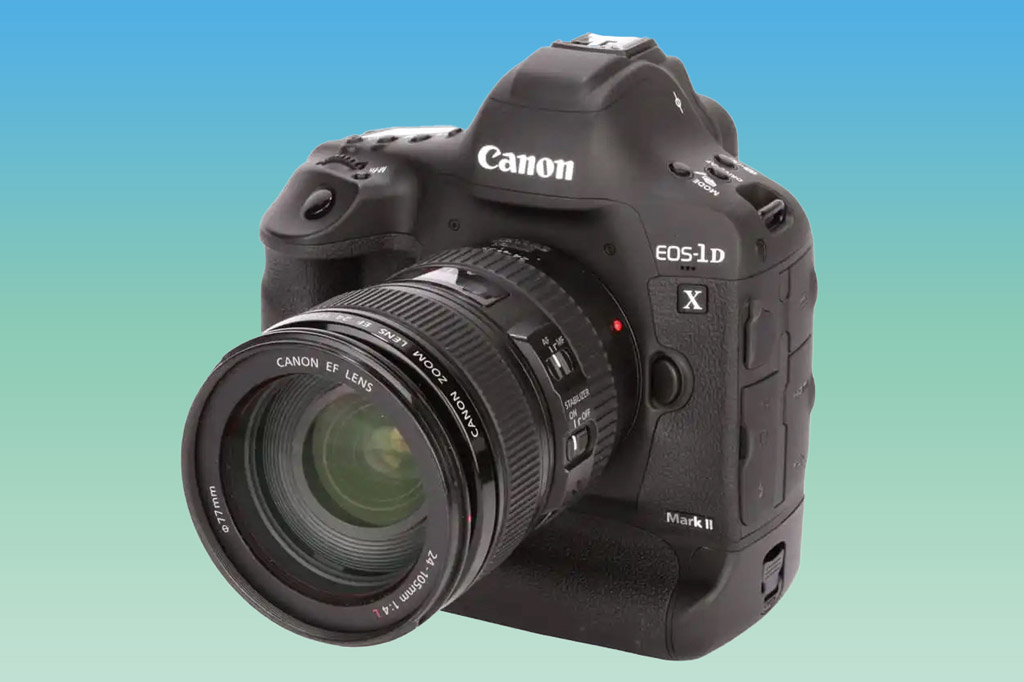
Expect to pay: up to $2000 or in the UK: £900 (good condition) to £1,600 (excellent)
Its full-frame 20.2MP CMOS sensor has a very capable high ISO performance while its AF system uses Canon’s AI Servo III+ algorithm and EOS Intelligent Tracking and Recognition (EOS iTR) to give accurate and responsive focusing even with slower-aperture lenses. The EOS-1DX Mark II has a very fast shooting rate, capable of 14fps with AE/AF tracking.
Read our review of the Canon EOS 1DX Mark II
Leica SL (Typ 601)
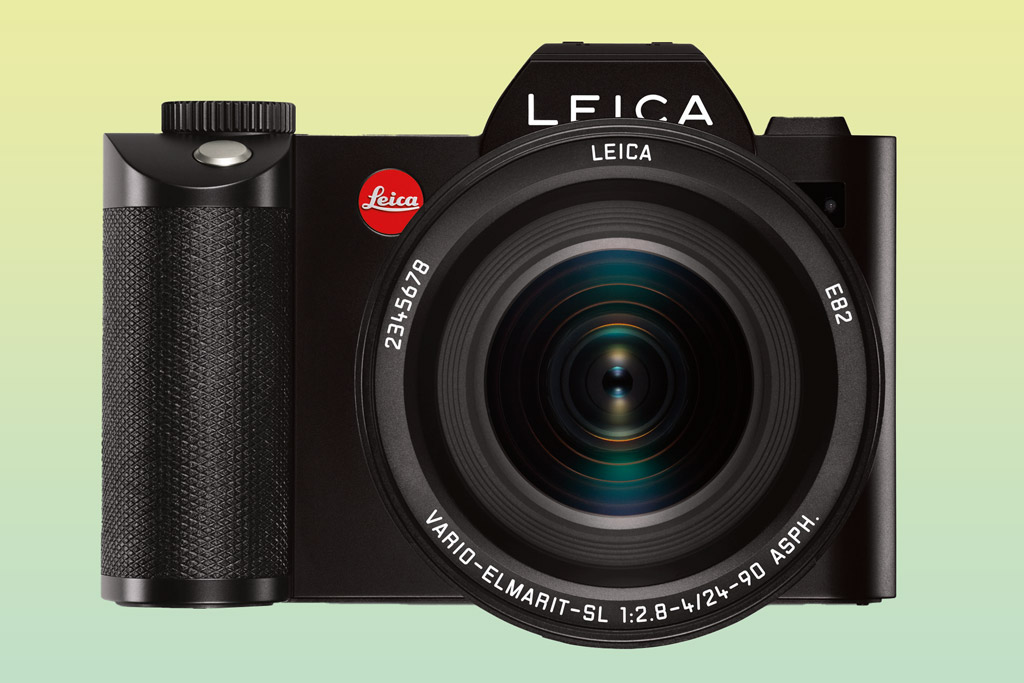
Expect to pay: $1750 / £1,400-1,800
The SL (Typ 601) was Leica’s first autofocus full-frame mirrorless camera. It boasts a 24MP CMOS sensor supported by Leica’s Maestro processor giving an ISO range of 50-50,000 and outputting DNG Raw files. It is weather-proofed and the EVF has a 4.4m dot resolution giving a viewing image with amazing detail. Now, nine years after its introduction, it’s pretty good value.
Read our review of the Leica SL
Nikon D850

Expect to pay: $1500 / £1,400-1,570
The Nikon D850 is available new at 2,799 body only but its used price makes it a very tempting proposition. At its heart is a 45.7MP back-lit sensor and Expeed 5 processor giving an ISO range of 32-102,400 and even at higher speeds, image quality is impressive. Autofocus is accurate, responsive and very capable thanks to a 153 AF point, 99 cross-type sensor system.
Read our full review of the Nikon D850
Panasonic Lumix S1
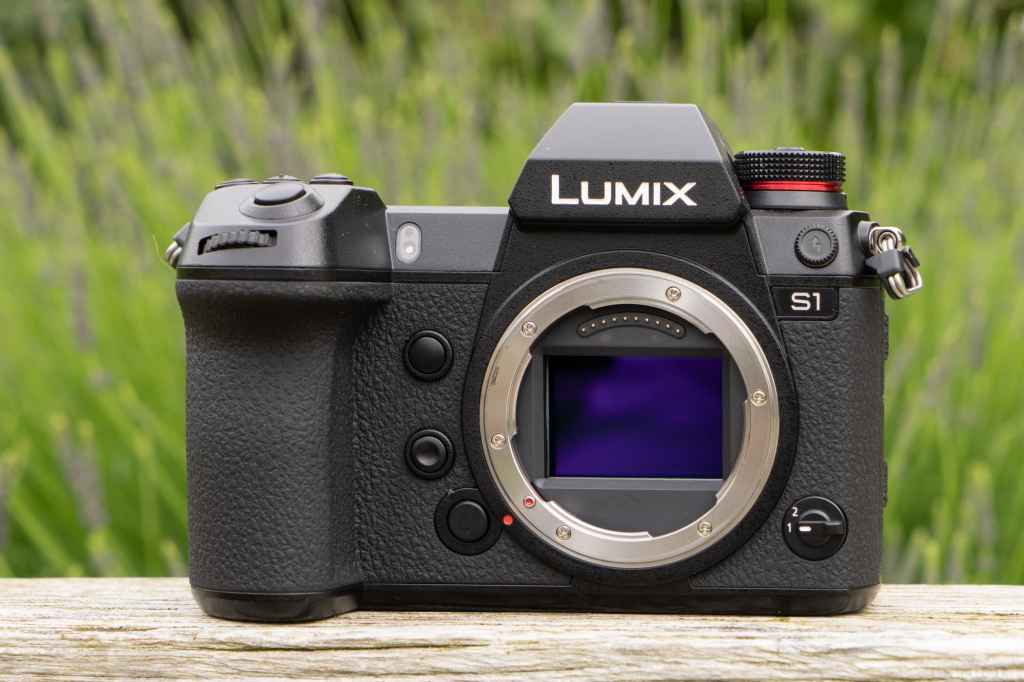
Expect to pay: $900 / £729-795
Panasonic had a formidable Micro Four Thirds line-up when it launched into the full-frame market with the S1 and the S1R, mirrorless models based on the L-mount. The Lumix S1 was a chunky camera housing a mid-level 24MP with impressive stills and video specification making it a worthy hybrid camera. Key features includes a five-axis in-body image stabiliser, a multi-shot high mode giving 96MP files.
Read our full review of the Panasonic Lumix S1
Pentax K-1
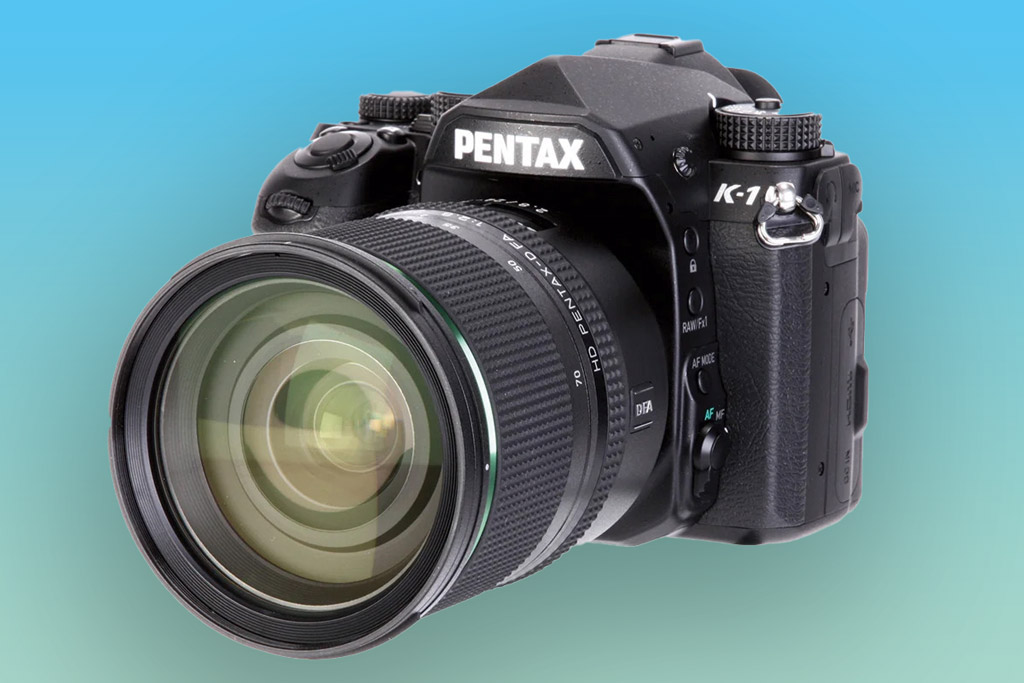
Expect to pay: $900 / £800-949
The Pentax K-1 had a rugged, weather-proofed body and at its heart had a 36MP image sensor without an optical low-pass filter; and this capable unit delivered detail-packed pictures even at ISO 6400. A five-axis in-body image stabiliser had a 5EV benefit and also enabled Pixel Shift Resolution shooting with an electronic shutter. The K-1’s flexible LCD monitor was notable too for its innovative and tough design.
Read our review of the Pentax K-1
Related reading:
- The best mirrorless cameras you can buy right now
- The best DSLR camera you can buy
- Best used DSLRs to buy
Follow AP on Facebook, Twitter, Instagram, YouTube and TikTok.


